|
 |
|
 |
|
 |
 |
| |
16:9 in English: Love and Adversity: Borzage and Silent Melodrama
Af MARK LE FANU
It’s over thirty years since Jon Halliday’s pioneering book-length interview with Douglas Sirk (Sirk on Sirk, Faber & Faber) first theorized melodrama for an English-speaking readership. With that book came the notion, hard to dispel, that the best melodramas were/are usually self-reflexive and ironical. Many of the greatest early masters of the genre, however, led from the heart: Frank Borzage (like his contemporaries Griffith and Murnau) (fig. 1) seems unaffectedly to have trusted and loved his material. The following article revisits this important artist in the wake of a fine new DVD selection featuring eleven of his movies.
The history of the genres of cinema would be hard to conceive of without some such concept as melodrama, and yet the word itself is inherently ambiguous. In one of its uses it points towards films where crime and violence are important if not paramount. Gangster films, by definition, are melodramas. So it is appropriate for example that the movie which John Dillinger was visiting on the night of being gunned down by Melvin Purvis’s G-Men was, as a matter of historical fact, a Clark Gable vehicle called Manhattan Melodrama (1934, director W.S. van Dyke) – extracts of which appear in Michael Mann’s recent dramatization of the outlaw’s life and times, Public Enemies (fig. 2). Moving forward into the forties and fifties, the film noir and melodrama form a recognizably close cousinship, sharing a hardness of edge or else a cynicism which in the hands of an actor like Humphrey Bogart can often be witty and stylish: in these kinds of films we are not looking too closely to have our emotions seared. And yet (here is what makes the matter complicated) another meaning of melodrama in cinema denotes an idea the very opposite of “hardboiled”. Early melodrama – melodrama in silent cinema – is, par excellence, the cinema of sentiment and tenderness. Purity not crime is its privileged hunting ground; or if there is crime it is there precisely to show in a more contrasting light the hero’s, and the heroine’s, eventual redemption. Innocence was valued in these silent movies as it has never been valued since.
Frank Borzage (1894-1962), who grew up in Utah, the son of first generation Italian immigrant parents, is not so much known now, but in his heyday in the late 1920s – at the apogee, so to speak, of the silent film – he was one of the most famous as well as one of the highest paid directors in the business. His complete filmography runs to 103 films, 58 of them silent (among which 17 are no longer extant), the remaining 45 talkies. His last film was signed in 1959 (fig. 3). Across his career he worked for a fair number of the major studios, but the beautiful, ambitious silent films in the late twenties with which his name is most usually associated – 7th Heaven (1927), Street Angel (1928), The River (1929), Lucky Star (1929) – all came out under the Fox banner, at the moment of that studio’s highest artistic prestige when its production was dominated by the towering figure of F.W. Murnau (fig. 4).
It’s important to bear in mind at the outset that though Borzage is, as I have said, most usually thought of as a great silent director, he did successfully make the transition to the talkies. Films such as A Farewell to Arms (1932), Man’s Castle (1933), Little Man What Now? (1934), Living on Velvet (1935), Desire (1936), History is Made at Night (1937), Three Comrades (1938) and Mortal Storm (1940) rank among the finest films of the thirties (fig. 5) Early Hollywood sound films, at least up to the imposition of the Hays code (1934), have a snap, crackle and pop to them, a wisecracking looseness and an energy that is very engaging. But the technical breakthrough into sound brought corresponding losses. The introduction of the human voice (especially in its genteel or would-be upper class intonation) sometimes flattens the average Hollywood movie of this period; robbing it, somehow, of the dreaminess and freedom it possessed in the heyday of the silents.
It is difficult to explain exactly how this should be so: there are always many factors in play. The changes in the late twenties and early thirties introduced into the lighting of sets, into editing, into art direction constitute, after all, an immensely complex subject in itself. At least we can say, the Fox studio, with its patented sound system (Fox Movietone), was in the middle of these changes – aesthetically as well as economically. During much of this transition, the same movie might appear in several different versions, rendering generalizations – about the respective artistic qualities of “sound” and “silence” - difficult to substantiate. Lucky Star, for example, was originally released in two versions, one silent with background recorded music, the other with some spoken dialogues. (Only the silent version is extant) (fig. 6).
These hybrid formats, if we can stay with them for a moment, complicate our critical judgements, by taking attention away from the story’s moral and cultural issues, inviting the viewer instead to immerse himself in the semiology of the movie’s communicating process. In the earlier version of Borzage’s Song O’ My Heart (1930), for instance, we seem to have four distinct registers in operation at different times in the same movie: (1) silent dialogue with intertitles, with pre-recorded music on the sound-track (closest, this, to the experience of watching a standard silent film); (2) recorded dialogue without music on the soundtrack (in the context of a film about music, these passages seem bare and remarkable); (3) recorded dialogues with background music on the soundtrack; and finally, (4), syncronised recorded song: the voice of the famous Irish tenor John McCormack, whose lightly-fictionalised personality the movie is constructed around – a voice by then long available on gramophone recordings, but now available for the first time on film, courtesy the Movietone process.
The particularity of silence
The four different ways of registering the progress of the tale seem to become, inescapably, the subject of the movie itself, at the expense of its ostensible subject – unless indeed the two are the same. Which in a way they are: as well as using sound, the film is about sound: the great voice of John McCormack. Does one like the film? Is it artistically successful? are somewhat different questions. Song O’ My Heart is certainly a melodrama – its central sequence has McCormack, singing in New York in the Carnegie Hall, “picking up” mystically the fact that his beloved is dying back in Ireland; her grief and solace have been communicated to him across the ocean (fig. 7). At such moments as this, the sublime and the sentimental become impossible to disentangle artistically - as frequently happens with melodrama: one of the things that most separate it, perhaps, from a tragic high art form like opera.
At all events, we have to remember that silence, in the silent movies, was never just silence; there was invariably music in the background. The music brought out feelings in the audience that had something inchoate – private, undefinable, quasi-religious – about them: it was an artform specifically adapted to the emotions of yearning and mystery. If we count Lucky Star as Borzage’s last “pure” silent film (though as we have already said, the movie was also released in a sound version – now lost – in which some of the dialogues were recorded), there are, as I have said, 58 silent pictures in the Borzage filmography, starting from 1916. Ten of these (the final ten) were made for the Fox studio, five of which (Lazybones, 7th Heaven, Street Angel, The River (incomplete) and Lucky Star) have recently been made available on a sumptuous DVD compilation (fig. 8). Charles Farrell plays the lead in four of them, partnered (in three of them) by Janet Gaynor.
Change in acting styles
The period under consideration witnessed a gradual change in the kind of star (and with this, the kind of story) that American audiences responded to. The fresh, naïve all-American girl symbolized in the early days by an actress like Lilian Gish – virginal, wholesome and innocent (of course feisty too) – slowly at the end of the twenties gave place to a preference for sexier foreign models, of whom Garbo may be singled out as representative example (Gish in her memoirs is explicit in the resentment she feels about the “muscling in” of this actress). Farrell and Gaynor of course belong, spiritually, to the earlier age of innocence, the moral, cultural and aesthetic presuppositions of which are difficult for us now to get back to imaginatively; in some ways (we have to be honest about it) this universe really is a lost world (fig. 9). And yet, in other ways, the preoccupations expressed by these symbolic oppositions between innocence and worldliness are never entirely beyond us; certainly they belonged to the way people lived then; and perhaps the values and hopes enshrined in them are more universal than we are inclined to think.
Take the business of female virginity and its haunted shadow, the spectre of the “fallen woman”: the sharp, populist disjunction between these two states of being now seems false, literary and (where art is concerned) an invitation to hypocrisy. There are moments in the late, great silent films of Borzage which perhaps don’t quite escape this indictment; in 7th Heaven, for example, we have to believe that the character played by Janet Gaynor both is a prostitute and is not a prostitute simultaneously; the contradiction involved makes moral nonsense of her actions – at least some of them; as the story progresses I feel it comes not to matter so much (eventually, not to matter at all) (fig. 10).
Street Angel also, as the title suggests, paddles in these waters; only here there is no discernible falsity. Prostitution, in the movie’s imagined Neapolitan setting, is accepted as a fact of life, and not moralized about; the heroine’s desire to escape its stigma (and not to be mistaken for “one of the tribe”) is silently understood in the wider context of the enormous oppression of poverty, and the fight to make a decent life for oneself. It is easy to be condescending about respectability; it is a dull virtue and (thank heaven) these movies don’t preach it. Yet arguably it is part of the cement of civilization, and in so far as Hollywood belongs to civilization (which of course it does), decency’s underground beckoning in these movies cannot be wholly unintelligible to us. Silent melodrama had a Christian underpinning broadly congruent with the level of Christianity operative at the time in American society: quite pervasive in some places, though in others (one thinks of the culture of gangsterdom) comprehensively irrelevant. Purity, then, is a “given” - in silent melodrama generally, and in Borzage specifically; which is another way of saying it is a complex cultural datum, with many layers of meaning. For students of Borzage the interest has always lain in finding how subtly it is eroticized. For as tenderly as in the movies of European contemporaries like Renoir and Vigo, Borzage celebrates the beauty, magnetism and justness of the human body. |
|
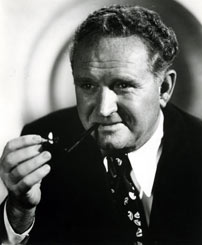
Fig. 1. Frank Borzage.
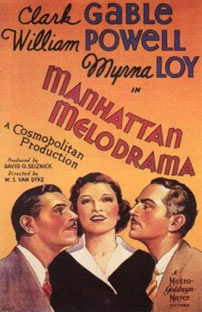
Fig. 2. Manhattan Melodrama (1934).
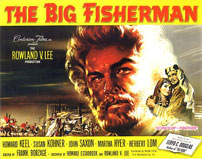
Fig. 3. Borzage’s last directorial credit: The Big Fisherman (1959).
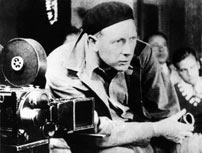
Fig. 4. F. W. Murnau.
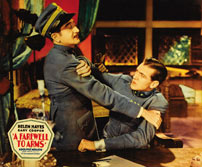
Fig. 5. A Farewell to Arms (1932) is probably Borzage’s most wellknown sound film.
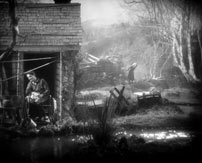
Fig. 6. The cinematography of Lucky Star (1929) by Chester Lyons (and William Cooper Smith) is outstanding.
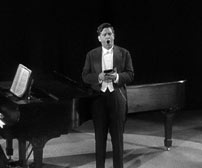
Fig. 7. McCormack performs at Carnegie Hall while his sweatheart is dying in Ireland.
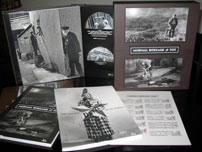
Fig. 8. The DVD compilation: Murnau, Borzage and Fox.
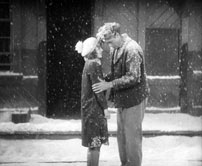
Fig. 9. Mary and Tim (Gaynor & Farrell) embrace towards the end of Lucky Star (1929).
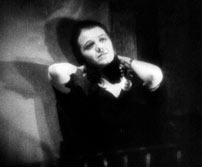
Fig. 10. Gaynor’s character both is and is not a prostitute in 7th Heaven (1927). |
|
| |
Borzage’s eroticism
The celebration in question has something quite modern about it. One notices with Borzage, for instance, that the “erotic gaze” (to risk using a phrase that alas has become something of a cliché) always goes both ways: it is simultaneously the vector of male and of female desire. In the Parisian garret beneath the stars where, in 7th Heaven, the pair of lovers (and one must call them lovers) live in chaste unmarried contiguity, the handsome body of Chico undressing (fig. 11) is as attractive to the girl as her body is to him in the corresponding scene where she takes off her clothes, slips into a nightie and slides under the coverlet of a double bed which at this stage there will be no question of them sharing. (Later they can share it, after a makeshift marriage- service of their own devising: no need for a priest to add his official blessing to a blessing that is so clearly already theirs.) The nightie comes back, transformed into a wedding gown, in one of the great epiphanies of cinema when Diane (the Gaynor character), clambering across the little gangway that separates the neighbour’s “fitting room” from the couple’s garret, reveals herself to her future husband in the window enclosure, with the radiance of a visiting angel.
Such moments in Borzage accrue, with marvelous physical potency, and one could give examples from almost any of the films being discussed here. In Street Angel there is a sequence in a circus caravan where Janet Gaynor is lying on her back munching an apple and talking to a gypsy companion who is in the process of telling her fortune. Her crossed legs are propped up against the caravan’s wooden wall, and the camera focuses first on her stockinged feet and ankles before sliding down the entire length of her legs to the beginnings of her skimpy circus tutu (fig. 12). How shouldn’t this be lascivious? one wonders. It’s not lascivious, one is forced to conclude, because Borzage himself isn’t lascivious: protected by the tenderness of the artist, the eroticism is delicate and winning. Later on in the film, the girl is forced to become a saint; here she is a maiden, and carefree.
The River (1928) is interesting in this context. The first and last reels of this film are missing, along with little bits in the middle so one can’t really get a sense of the original rhythms and spaciousness on which so much of our judgement of the success of a given movie depends. Nonetheless, the large central section of the film is consecutive enough to allow us to make sense of it, and to discuss it as something other than a mere fragment or curiosity. Allen John (Charles Farrell) is a lone bargee making a voyage to the sea when he is held up at a mining camp in whose vicinity a dam is being built. In a cabin nearby dwells Rosalee (Mary Duncan), an older woman with a past, whom he makes friends with. At first the relationship is innocent, resembling, somewhat, that of a mother and son (maybe more accurately: a boisterous nephew and aunt). As time goes by and winter sets in, feelings between the pair, incipiently sexual, flower into love. |
|
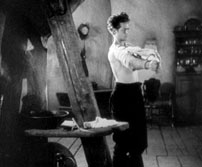
Fig. 11. Chico (Farrell) undresses in 7th Heaven (1927).
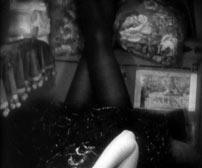
Fig. 12. Angela’s circus tutu in Street Angel (1928). |
|
| |
Enough of the film survives for us to be able to witness what must have been the tale’s dramatic climax, an extraordinary sequence in which Allen John’s inert body, rescued half-frozen from a snow storm, is revived by Rosalee first rubbing his naked torso with snow, then climbing into bed with him and warming him back to life by dint of her own naked heartbeats. Throughout the film, heart and body have been understood interchangeably; thus, lying beside her young visitor in an earlier scene, Rosalee rubs her hand across her breasts while speaking as she does so of the beating of her heart (fig. 13). As is typical with Borzage, the physical and the emotional (the spiritual and the carnal) are “poetically fused” in such powerfully erotic images. If the body is metaphor for the soul, the soul, equally, is metaphor for the body.
Meaning of miracles
I have left until last Borzage’s three best known films from the silent period, the movies on which, such as it is, his contemporary reputation is based – 7th Heaven (1927), Street Angel (1928) and Lucky Star (1929). Lucky Star is a late contender. When I first became aware of the director as a student in my twenties the film was still considered lost. I remember the extraordinary excitement of the evening in the autumn of 1991 when a newly-discovered print of it was screened for the first time in front of an audience of scholars and enthusiasts at the annual Giornate del Cinema Muto in Pordenone, in the huge and cavernous Cinema Verdi. No DVD copy, no matter how technically accomplished, can give a sense of the velvety silver and blackness of the film’s resplendent cinematography (by Chester Lyons). A live orchestra provided the music; the film itself leapt to life. It was one of those performances in front of which the viewer stops theorizing about melodrama and starts instead responding to it. What was the quality of the emotion? How to account for the power of it? Lucky Star and 7th Heaven both hinge on a miraculous or unexplained outcome. You could call such endings preposterous if you felt like it. In 7th Heaven the hero, Chico, is killed in the trenches in the last days of the war: we see him die in front of our eyes (fig. 14-15). And yet there he is in the dramatic final scene making his way back to his beloved through the celebrating Parisian crowds – blinded but alive: how can this be? Is there a natural explanation for it - or are we left only with the supernatural? It is up to us to choose.
Similarly (though perhaps less necessarily depending on the mysterious beneficence of the Almighty), the crippled ex-soldier Tim Osborn in Lucky Star regains, at the last moment, the use of his legs, in order to fight his way through a snowstorm and rescue the girl of his dreams (fig. 16). In both these cases, it seems to me, the emotion is poignant and beautiful because arising so seriously out of the profound memory of the war; ten years after this cataclysmic event of the 20th century, the tragic separations it gave rise to seem to be still alive and operative in the popular imagination. Can longing ever work miracles? we might ask. Yet the question is perhaps too literal. The films, surely, are about the desire for the miracle to take place, more than they are an affirmation that such things ever do, or did, happen in reality. The essential meaning is metaphorical, and understood as such; one could say that this is melodrama’s delicacy.
Part of the charm and depth of either film lies in the imagined particularity of its setting: the spacious garret at the top of the tenement’s seven flights of stairs in 7th Heaven (stairs that we ascend in the company of the lovers in a beautifully controlled crane shot, fig. 17) or, no less memorable, the lonely rural enclave with a stream running through the middle of it and farm animals on the hillside, in Lucky Star. Both locations of course are sets: everything is made in the studio. The same goes for the fairy tale Naples of Street Angel. In this film even more than in the other two the influence of Murnau is discernible: the whole bag of visual tricks associated with the German magician is on display here – theatrical shadow-play in the alleys, smoky chiaroscuro on the wharves, everything made fluid and luminous by extended travelling shots and by the delicate artistry of the lighting (fig. 18). As far as the “look” is concerned, Street Angel is a pure work of Expressionism. Pictorial, to the last detail, in conception, it’s appropriate that the film should be about painting: its hero Gino (Charles Farrell again) playing an artist upon whose portrait of the heroine Angela (Janet Gaynor) rests the movie’s rather complex metaphysics. Angela is a working-class girl on the run from the carabinieri, her crime having been to steal money to buy medicine for her dying mother. Before this we see her tempted to find the cash by taking up prostitution – though circumstances intervene to render this drastic step finally unnecessary. Here she is, then, free but a fugitive, with a job in a circus and a handsome young painter admiring her.
The portrait he paints of her, against a background of the Bay of Naples, “allegorises” her into a beautiful and aristocratic young woman (fig. 19); he has seen the essential nobility of her soul, and this moves her. Later, the painting is sold to provide “wine, bread and sausage” for the struggling couple who have left the circus when an accident damages Angela’s ankle. A dealer who comes across the canvas in an antique shop sees that with a little retouching (including the deft addition of a halo) it can be passed off as a lost Madonna by a famous old 18th century master, and under such pretences it is sold (unbeknownst to the pair) to a neighbourhood church that places it in honour above the altar.
Meanwhile, things have not been going well for the couple; the carabinieri have got onto Angela’s trail, and in an extraordinary gesture meant to settle private accounts, she gives herself up into their custody; she hopes, by this sacrifice, to “shrive” the sin of her theft, and that when she comes out of jail she and Gino can get back together again.
Naturally, it doesn’t work out like this; Gino, stung by what he sees as her treachery, gives up painting and turns against women in general – they are all whores as far as he is concerned. Unaware of these changes in his character, Angela on her release from jail seeks him on the city wharves where he has drifted to drown his sorrows. Yet she recoils in horror when, at last revealing herself to him, he lunges at her and tries to kill her. The ensuing flight and pursuit take them into the interior of the church on the altar of which hangs the faked painting of the Virgin Mary: his painting of her – if he could only recognize it! (fig. 20) “That’s the woman you should be!”, he cries, closing in to strangle her. (He has turned into a kind of Nosferatu demon.) “I’m as innocent as she is,” Angela pleads back in response. At which point – but absolutely at the very last moment – the scales become lifted from his eyes: the face in the painting and the face of the woman in front of him fuse together to reveal themselves as one and the same person – in short, the girl he once loved and whom (his curse now lifted, through the Virgin’s intercession) he will learn again to love eternally.
Of course the whole thing is “melodramatic” to the last degree, in all senses of the word, including, here, the sense of something “faked”, artificial, remote from truth, and from the contingencies of everyday living. Yet truth, in art, comes in many forms. There is a dreamlike logic to the tale that is reinforced by the fact that the drama is played out in silent mime, using music and intertitles rather than the human voice to communicate the movie’s lofty and vanished idealism. Borzage’s intertitles are always eloquent. Street Angel opens with one of the finest of them. “Everywhere” [it tells us] “…in every town…in every street…we pass, unknowing, human souls made great by love and adversity.” |
|

Fig. 13. The River (1929). Rosalee (Mary Duncan) rubs her hand across her breasts while speaking of the beating of her heart.
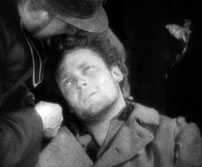
Fig. 14. “Tell her I died looking up,” Chico (Farrell) tells a fellow soldier.
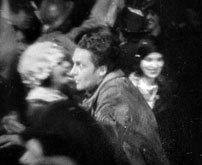
Fig. 15. Shortly after, Chico makes his way through the Parisian crowd celebrating the armistice.

Fig. 16. Lucky Star (1929). At the very last moment Tim (Farrell) regains the use of his legs.

Fig. 17. 7th Heaven (1927). The camera follows Chico and Diane (Farrell and Gaynor) towards the steps and then ascends with them up to his apartment at the top.
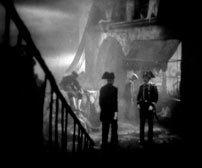
Fig. 18. Expressionist lighting and set design in Street Angel (1928).
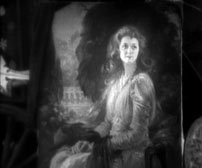
Fig. 19. Street Angel (1928). The painting of Angela (Gaynor) as Gino (Farrell) sees her.

Fig. 20. Street Angel (1928). The faked painting of Virgin Mary: Gino’s painting of Angela. |
|
 |
 |
 |
 |
 |
|
 |
 |
 |
| |
Fakta
Bibliographical note
Borzage was “rediscovered” by a generation of cinephiles in the late 60s and early 70s, among whom the Village Voice critic and film historian Andrew Sarris deserves special mention. His three shots at “nailing” Borzage are all engaging: first, a brilliant two page essay in The American Cinema: Directors and Directions 1929-1968) (New York, E.P. Dutton, 1968); next, his entry on the director in Richard Roud’s Cinema: A Critical Dictionary (London, Secker & Warburg, 1980), finally a larger, revised (but not quite so satisfactory) essay in the collection “You Ain’t Heard Nothin’ Yet”: The American Talking Film, History and Memory, 1927-1949 (Oxford University Press, 1998).
The literature on melodrama and film is extensive. Two seminal works may be singled out: Jon Halliday’s interview book with Douglas Sirk (Sirk on Sirk, London, Faber & Faber, first edition 1971, revised and updated 1997) and Thomas Elasesser’s pioneering text “Tales of Sound and Fury: Observations on the Family Melodrama”, published in the British film journal Monogram (no 4, 1972).
For French-speaking readers, the critic Jean-Loup Bourget has written consistently well on Borzage. See the two dossiers he put together for the French review Positif (special issue July and August 1976, and another special issue in April 1993) along with his book-length study of film melodrama, Le mélodrame holywoodien (Paris, Stock, 1985).
The main modern biography of Borzage, by the Swiss film historian Hervé Dumont, has just been translated into English and is clearly essential reading: Frank Borzage: The Life and Films of a Hollywood Romantic (McFarland, 2009, with a preface by Martin Scorsese).
A major retrospective of Borzage’s silent period films was held in Pordenone at the Giornate del Cinema Muto in 1992: a special commemorative issue of the festival’s journal Griffithiana (number 46) contains scholarly essays on the director by Davide Turconi and Richard Koszarski.
Finally, an up-to-date survey of writings on Borzage may be found at the end of Joe McElhaney’s online essay. |
|
|
|
|
 |
 |
 |
 |
16:9 - september 2009 - 7. årgang - nummer 33
Udgives med støtte fra Det Danske Filminstitut samt Kulturministeriets bevilling til almenkulturelle tidsskrifter.
ISSN: 1603-5194. Copyright © 2002-09. Alle rettigheder reserveret. |
11 |
|
|
 |
 |
|
|